Information Technology (IT) and also Computer Science (CS) usually are two distinct yet related fields that play essential roles in the modern digital landscaping. Although they often overlap into their applications and career options, they differ significantly into their focus, methodologies, and goals. This comparative analysis aims to elucidate the distinctions among IT and CS, putting together a clearer understanding of their unique advantages to the technology sector.
Computer Science is fundamentally the study of computers and computational systems. It encompasses the particular theoretical foundations of information along with computation, taking an summary approach to understanding how computers answer problems. CS is severely rooted in mathematics as well as logic, and it involves the structure and analysis of codes, data structures, and the concepts of programming languages. Area also covers areas including artificial intelligence, machine mastering, cryptography, and computational difficulty.
In contrast, Information Technology is more application-oriented, focusing on the utilization and management of computer systems to solve business and organizational challenges. THE ITEM professionals are concerned with the useful implementation, support, and maintenance connected with technology infrastructures. This includes multilevel administration, database management, cybersecurity, and IT support services. THAT encompasses a wide array of technological innovation and systems that facilitate the storage, retrieval, as well as transmission of information.
One of the primary variances between IT and CS lies in their educational curricula. Computer Science programs typically emphasize theoretical knowledge as well as problem-solving skills. Courses in a CS curriculum include innovative mathematics, algorithms, computer structures, software engineering, and a variety of specialized topics such as design, robotics, and natural terminology processing. The goal is usually to equip students with the ability to understand and create new computing systems and to contribute to the advancement on the field through research and also innovation.
On the other hand, Information Technology plans focus on the practical abilities needed to manage and apply computer systems in real-world situations. The IT curriculum frequently includes courses on system configuration, database management, programs analysis, and information security. THE ITEM students learn to apply recent technologies to meet the needs of organizations, ensuring that systems manage efficiently and securely. The actual emphasis is on hands-on experience and the ability to troubleshoot and solve technical problems.
Another key difference concerning IT and CS will be their approach to problem-solving. Laptop or computer scientists often engage in subjective and theoretical problem-solving, planning to develop new algorithms or perhaps computational methods that can be utilized across various domains. Some might work on optimizing algorithms intended for faster data processing or maybe creating new programming paradigms to enhance software development.
In contrast, IT professionals typically give attention to concrete, practical problems inside a specific organizational context. They could be responsible for ensuring that a company’s network infrastructure is solid and secure, or which its data management programs are effective and compliant along with regulations. view it The work of IT pros is often more immediate as well as hands-on, requiring them to swiftly diagnose and resolve difficulties to maintain operational continuity.
Position paths available in each industry also reflect these variances. Computer Science graduates frequently pursue roles as computer software developers, data scientists, techniques analysts, or research scientists. These positions generally involve significant programming, mathematical modeling, and algorithmic design. They could work in industries ranging from tech giants and startups to academic and governments research institutions, where these people contribute to the development of new engineering and computational theories.
Information Technology graduates, on the other hand, frequently come across employment as network facilitators, IT support specialists, cybersecurity analysts, and systems administrators. Their roles typically give attention to the implementation, maintenance, in addition to security of technology methods. They work across various sectors, including healthcare, financial, education, and government, being sure that technology systems are reliable, efficient, and secure.
The interplay between IT and also CS is also significant. Even though CS provides the foundational concepts and innovations that drive technological advancements, IT authorities apply these advancements to make practical solutions that meet the needs of businesses and society. In particular, advancements in artificial cleverness and machine learning put together by computer scientists can be implemented by IT professionals to enhance files analytics, automate processes, and improve decision-making within institutions.
Despite their differences, THAT and CS share the goal of leveraging engineering to solve problems and enhance human life. Both areas require strong analytical as well as technical skills, and specialists in each must stay abreast of rapidly evolving engineering and trends. Collaboration in between IT and CS pros is often essential, particularly in multidisciplinary projects that require equally theoretical innovation and simple implementation.
As the technology landscaping continues to evolve, the dissimilarities between Information Technology and Computer system Science may blur more, with increasing overlap throughout areas such as cybersecurity, data science, and cloud calculating. However , the core distinctions in their focus and strategies will remain, with Computer Research continuing to push the limitations of what is computationally achievable, and Information Technology ensuring that these kind of possibilities are realized and also effectively utilized in the real world. Being familiar with these distinctions is crucial for young students, educators, and professionals while they navigate the opportunities as well as challenges within these dynamic fields.

